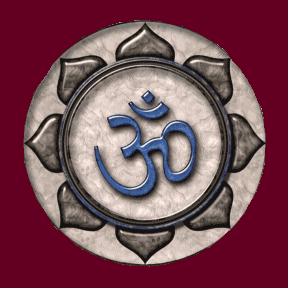Creative Spirituality
Objective:
- Become familiar with was in which spirituality influences artists
- Discuss the differences between spirituality and religion
- Examine spirituality as a generative force and a well spring for creativity
- Spirituality Definition
In My view, Spirituality is a belief in something, someone or in one’s own self. Belief in someone or something is usually seen by worshiping of a God or of an object that have been given godly attributes. However, Belief in one’s owns self is the belief in the inner good of a person or in other words belief in one inner self. Spirituality in western terms is also defined as Enlightenment, which is defined as the belief in individualism rather than traditional practices or religion practices. Thus, in this definition spirituality have both religious implication and also implication of being just spiritual. - Spirituality Difference from Religion
Though in many Religions spirituality plays a vital role it thus stands neutral in its association. As in spirituality can be practiced without religion. This is because spirituality stands more abstract then religion. Moreover, spirituality in any instance does not follow a code of ethics like religion but stands as a belief of all moral practice that tends to do moral good for humans or its society. Example of spiritual practices can be seen in the practices of Buddhist monks, as they do not belief is not a religion but rather a life style, which sold purpose the practice of doing good for others and living a simple life. - Creativity Definition
In my view, anything that is beautiful in the human eye is the product of creativity. Thus, creativity is the act of making something beautiful or the product of a beautifying process. Creativity is mostly considered as an art in the human eyes and the maker of such a creative object is always considered as an artist. However, nature is also beautiful and thus considered creative but in this case the artistic value of such creativity are always credited to God or to the science of nature rather then a human artist. - The Source of Creativity
In my view, the source of creativity can either be spiritual or evolutionary. As if its evolutionary, it is our “survival instant” to makes things beautiful and thus in the process of making thing beautiful creativity in the human species comes by our evolution. However, if its spiritual, creativity is fueled by both our reasons as humans and meditation of our internal self of what is creative and relating it to our beliefs in nature, science or religion.

Reflection:
The image above is called the “Om” in the hindu culture. The “Om” is a very strong aspect of the hinduism religion. However, the “Om” in the popular culture have become more than just a religious symbol for both hindus and other spiritual believers. The “Om” is seen as way for people to connect to their inner spirit and nature as in yoga “Om” is believed to be the sound of the universe that has the power to connect with the inner spirit of the universe. In hinduism thought “Om” is seen as the sign of the God of the universe Shiva. Today, the “Om” is popularly known as a very spiritual term that gives the very peace to connect with our inner soul. The most popular way people today practice the “Om” is through yoga. The connection between yoga and “Om” is that they both are part of the hinduism religion as they are believed to be thought by the hindu God Shiva and their also part of the ancient language sanskrit. As yoga is a discipline of spiritual practice by attaining the peace of one’s physical and mental self and “Om” is a way in which one connects to the spirit of the universe.
In the article Deeply seeing the author Alex Gray points out that “In order to experience art fully the viewer must go through a mini ego death by placing themselves in the inspired mind of the artist, who themselves are out of their mind and only acting as channel of creative spirits” (Gray, 74). The author basically points out that in order for on to appreciate art a viewer needs to understand the makers viewpoint, this view is also supported post modern theory of art stated by Ellen Dissanayake, which basically states that one cannot appreciate art without knowing its meaning from the stand point of its maker. Here Alex Grey makes a strong point about the influence of creative spirits on artist and how these spirituality influences art on the maker. The entire notion of spirituality is more abstract and letting the control of your mind to a abstract force that cannot be really explained. However, this abstract force is not religious or any thing that believe in God but rather its a concept of good and letting out a inner conception of the world and its natural elements.
Finally, as though the “Om” stand as a strong religious symbol for the hindus it is more popular used as a symbol of spirituality. Its popularity is due to its connection in yoga. However, “Om” and yoga are also results of religious believe as it derived from the hindu religion and traces its practice by the hindu God Shiva. Though, spirituality and religion are different because the Godly believe that drives religion and the spiritual believe that drives spirituality they are both similar in some practices and in the theory of doing good as religion at is best is Spirituality.
Future:
I would like to explore the phenomenon of how can one express his spirituality in other art forms. Moreover, what is the concept of spirituality related to the natural elements of the universe, in other words try to understand the scientific explanation about spirituality.
Bibliography: